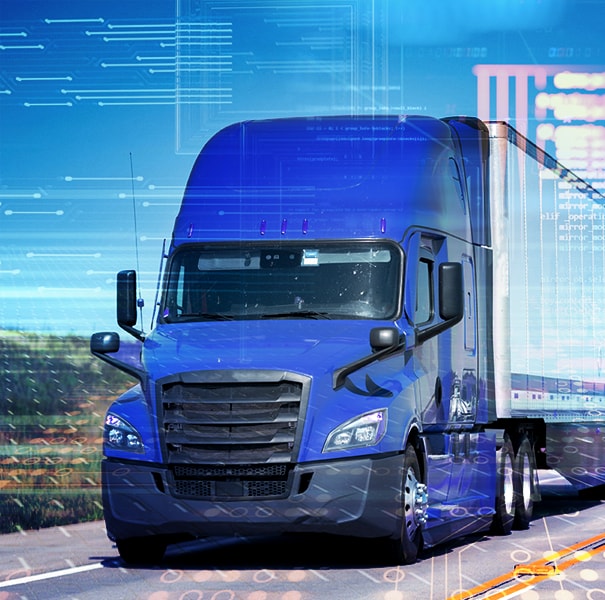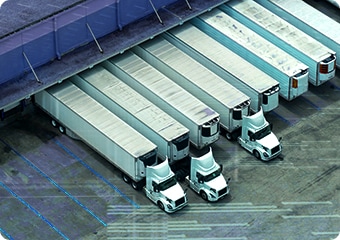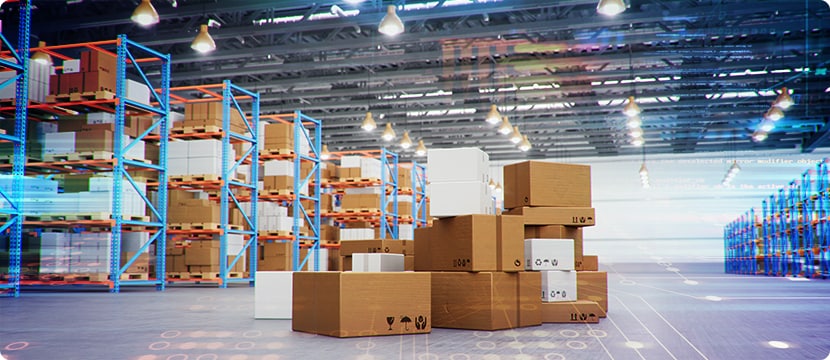

The pandemic showed how fragile our supply chains are, pushing the need for more intelligent, AI-driven systems. By using AI and automation, companies are making supply chains faster and smarter, helping them keep up with changes and challenges. Can this tech wave turn supply chains from cost centers into our strongest assets?
Billions of people around the world depend on supply chains to fulfill their needs and desires. It’s something we often take for granted, but recent times have spotlighted how essential they are. The pandemic turned out to be a magnifying glass that revealed the vulnerabilities and inefficiencies of the traditional supply chains. Naturally, legacy supply chains shot up as a major concern, with a staggering 60% of CEOs1 finding their supply chains under unprecedented stress. There is now an urgent need to rethink our supply chain strategy.
This idea is not entirely new; a paradigm shift has already been simmering beneath the surface of global supply chains. For over a decade, the term “digital transformation” has echoed through boardrooms and conferences, yet its essence remains elusive to many. Let’s demystify this and understand why it’s the need of the hour.
While the concept of warehouse automation has been around for over a century, today’s digital transformation requires a more integrated and advanced approach. At the heart of this transformative journey lies the superpowers – AI, machine learning, and automation. But where should one start their transformation journey?
The best bet is to eliminate the low-value-added tasks first. Pandemic or not, Intelligent automation (IA) proves invaluable when it comes to streamlining time-consuming routine processes. With Intelligent automation (IA) in the driver’s seat, what used to take hours can now be accomplished in just minutes. Unlike most humans, Intelligent automation (IA) excels at repetitive tasks—especially the ones that tend to be tedious and mundane. This not only liberates employees to focus on more strategic endeavors but also delivers substantial productivity gains for the company.

Why is this fervor towards digital transformation? What might IPA look like in action? Imagine a day in the life of supply chain operations: Robots handle repetitive tasks such as entering orders and updating inventory. AI and ML make intelligent, independent decisions about the best shipping routes or stock levels. Meanwhile, the system reads and writes complex reports, and cognitive agents suggest when to repair equipment. Everything from orders to shipments is tracked in real-time, ensuring smooth transitions between different steps and disparate systems.
But there is more to this story. The unmatched visibility and agility a true transformation offers and a host of benefits these two factors bring.
A telling study from McKinsey linked supply chain risks to a lack of visibility2. In line with this, a CGS survey found that 87%3 of respondents consider supply chain visibility a significant challenge they are currently working on.
Imagine preempting a potential supply shortage by flagging a critical vendor’s financial troubles, allowing for a timely switch to a more reliable supplier.
Every single one of the Fortune 10004 CEOs said Sustainability is important to them. Walmart5 has underscored the significance of sustainability and ESG factors throughout its entire supply chain, extending to subcontractors and every participant in the value chain. However, collecting and overseeing traceability data can be pretty demanding.
Loved what you read?
Get practical thought leadership articles on AI and Automation delivered to your inbox


Loved what you read?
Get practical thought leadership articles on AI and Automation delivered to your inbox
While AI is exciting, the road ahead has its challenges. Companies face issues6 like skill gaps, technology limitations, high implementation costs, and managing change every day. The good news is that providers are making solutions more user-friendly, making the transition smoother.
The use cases and benefits we discussed are just the beginning for supply chains today. For a long time, supply chains were seen mainly as cost centers and not competitive advantages like now. With competition increasing, especially with a focus on supply chain resilience, AI and Intelligent automation (IA) shine as strong options. No matter where you are in your digital journey, you can find your winning formula and a catalyst for change in AI and automation.
Disclaimer Any opinions, findings, and conclusions or recommendations expressed in this material are those of the author(s) and do not necessarily reflect the views of the respective institutions or funding agencies
- https://kpmg.com/si/en/home/insights/2022/03/kpmg-global-ceo-outlook-survey.html
- https://www.mckinsey.com/capabilities/operations/our-insights/future-proofing-the-supply-chain
- https://www.forbes.com/sites/forbestechcouncil/2023/04/07/fashion-supply-chain-transparency-takes-center-stage/?sh=2047cacc65d6
- https://www.ey.com/en_us/sustainability/sustainability-and-esg-trends-index
- https://one.walmart.com/content/dam/responsiblesourcing/supplier_expectations/Resource_Traceability_ENG.pdf
- https://www.mckinsey.com/industries/metals-and-mining/our-insights/succeeding-in-the-ai-supply-chain-revolution




